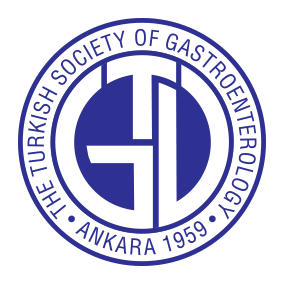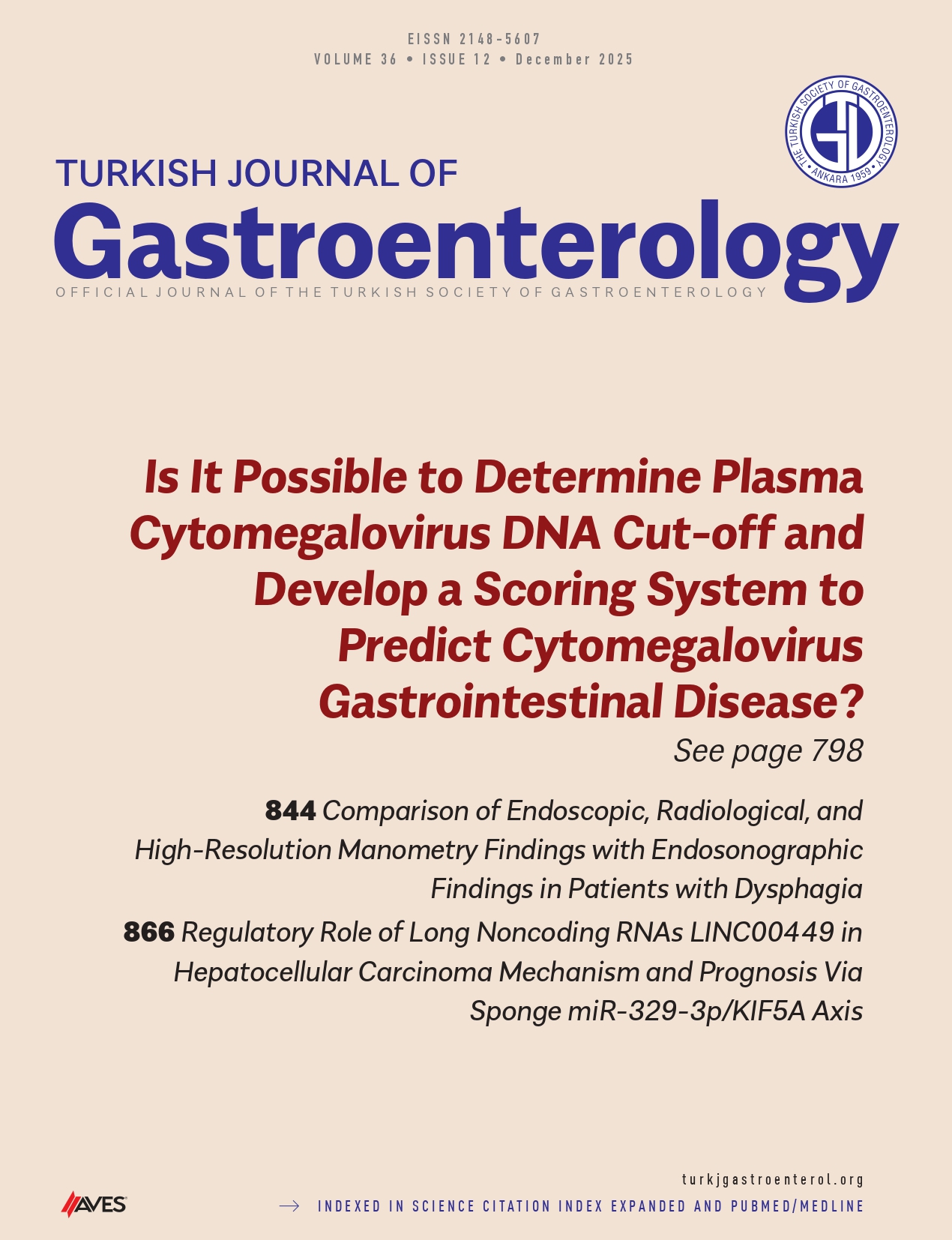Abstract:
Background/Aims: The role of semi-quantitative strain ratio (SR) using real-time endoscopic ultrasound strain elastography (EUS-E) in chronic liver disease (CLD) and cirrhosis is yet to be determined. Herein, the aim was to assess the usefulness of EUS-E to detect CLD and cirrhosis.
Materials and Methods: Patients with cirrhosis and non-cirrhotic CLD were enrolled prospectively. Patients without liver disease and undergoing EUS examinations for non-hepatic indications were taken as control group. Strain ratio was calculated from strains of hepatic vein and liver parenchyma. Fibrosis-4 (FIB-4) and aspartate aminotransferase (AST)-to-Platelet Ratio Index (APRI) scores were recorded, and blood cytokeratin-18 (CK-18) levels were measured to assess hepatic fibrosis. A clinical evaluation was also conducted.
Results: One hundred participants (control: 49, CLD: 33, cirrhotic: 18) were included. The SR and liver parenchyma strains in cirrhotics were significantly higher than those in the CLD (P < .001) and control (P < .001) groups. Strain ratio threshold set at 5.67 had a sensitivity of 94.4% and a specificity of 95.9% to differentiate cirrhotics from control patients. An SR threshold of 10.65 had a sensitivity of 94.4% and a specificity of 84.8% in differentiating cirrhotics from CLD patients. The SR showed a strong positive correlation with FIB-4 and APRI scores, but not with CK-18 levels.
Conclusions: Strain ratio thresholds of 5.67 and 10.65 obtained by EUS-E are useful to differentiate cirrhotics from non-cirrhotic CLD patients and liver-disease-free subjects, respectively. This pilot study is the first one evaluating the role of EUS-E in liver diseases, and future studies involving patients having CLD of specific etiologies are warranted.
Cite this article as: Duman DG, Alahdab YO, Demirtas CO, et al. Usefulness of endoscopic ultrasound strain elastography for measuring liver stiffness and the role of blood cytokeratin 18 levels as a surrogate marker of fibrosis. Turk J Gastroenterol. 2025;36(10):692-699.




.png)
.png)